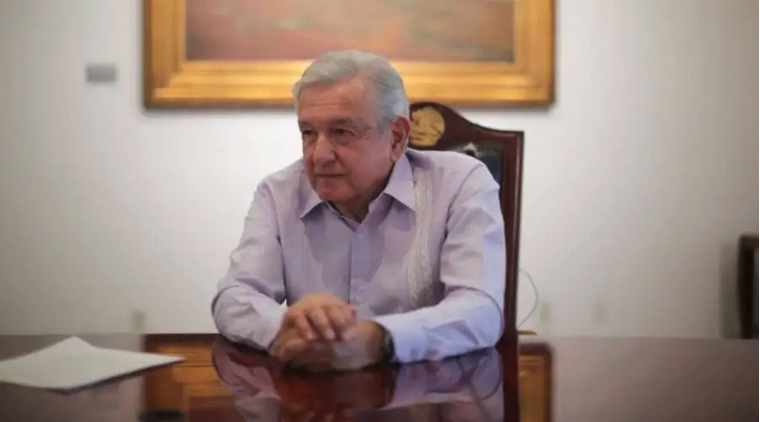by Jackie Botts
January 17, 2022 – Researchers, advocates and officials running the systems meant to help Maya agree that his struggle to transition indoors is common. At the same time, Maya’s experience reveals a number of problems the state faces in ramping up permanent supportive housing quickly.
Here are five key challenges — as well as potential solutions:
1. Understaffing and turnover
What’s the problem: Understaffing and turnover plague permanent supportive housing, experts said, due to burnout, low pay, lack of training for challenging work and few opportunities for professional advancement. Caseloads in permanent supportive housing often far exceed federal recommendations.
Working with burnt out and transitory staff can fracture trust, impeding a person’s recovery after homelessness, said Suzanne Wenzel, a University of Southern California professor who studies health and homelessness. “Because of the way one has had to survive on the street,’ Wenzel said, “trust is not a commodity that’s very plentiful.”
What are some solutions: State officials and researchers agreed that solutions must combine a variety of long-term strategies, including more recruitment of behavioral health workers, more training opportunities and more funding to provide better pay and benefits.
What’s the state doing: The state has been trying to grow the behavioral health and medical workforce for years. It has a $60 million five-year plan to increase the mental health workforce, and provides scholarships for students of healthcare and adjacent fields, including occupational therapists and social workers, in exchange for working in underserved communities for a year. To boost those efforts, Gov. Gavin Newsom proposed this month to spend $1 billion over three years to increase the number of community health workers, social workers, psychiatrists and substance abuse counselors.
2. Treatment remains siloed
What’s the problem: People who experience chronic homelessness often deal with complex and interrelated health challenges, ranging from physical ailments to serious mental illness to substance use disorder. While homeless services increasingly adopt a collaborative approach, experts said treatment remains siloed. Patients often navigate multiple health systems, with providers who treat their issues in isolation and don’t coordinate with each other — even when they work in the same building.
What are some solutions: In a study of LA’s permanent supportive housing programs, Wenzel’s research team found that staff struggled to coordinate and communicate with contracted service providers. The researchers recommended that permanent supportive housing programs consider hiring or training in-house staff to deliver some services rather than contracting with outside providers.
What is the state doing: The state is pushing for greater health care collaboration from the top down. Since 2016, 25 programs launched statewide to pilot the “whole person care” model, which emphasizes coordinated treatment of people with complex health issues and encourages providers to collaborate. Soon California will launch the next step: CalAIM, a statewide Medi-Cal upgrade for the highest-need patients. CalAIM will cover nontraditional services, like a personal care coordinator, food and housing assistance, and sobering centers.
3. Beyond medication management
What’s the problem: Government-funded mental health services often begin and end at medication management. But people recovering from homelessness also need intensive counseling and opportunities that help them find purpose and a sense of belonging, said Dr. Jonathan Sherin, a neuroscientist who directs the Los Angeles Mental Health Department.
“We really have to be thinking about models where we’re incorporating all aspects of the human condition into healing,” said Sherin.
What are some solutions: One such framework is a community-based mental health system pioneered in Trieste, Italy, in the 1960s and 1970s. There, treatment focuses on holistic wellbeing, emphasizing community building and work training. Sherin also believes that people in permanent supportive housing could benefit from greater access to occupational therapists, who help people develop skills needed for daily living and working.
Sherin hopes to demonstrate that the Trieste model can work in California. In 2019, he proposed a pilot program in Hollywood, which would reform how providers treat patients, track their outcomes and bill for services. Instead of focusing on illness, mental health providers would focus on helping patients improve physical health, achieve housing stability, and find love, belonging, and purpose. Approved for 2020 but stalled by the pandemic, the pilot remains in planning stages.
What’s the state doing: While recent rounds of state funding for permanent supportive housing for people with serious mental illness specify that projects must provide mental health care and encourage them to provide employment services, there’s no further guidance about mental health strategy.
4. Allowing people to move
What’s the problem: The housing first philosophy emphasizes consumer choice, meaning formerly homeless people choose where they live and what services they receive. Researchers and officials said this means residents should be able to move if their initial apartment isn’t a good fit. In practice, homeless agencies and housing providers don’t always prioritize moving because they’re trying to get other people off the street.
What are some solutions: One solution comes from a permanent supportive housing program aimed at the most frequent chronically homeless users of Santa Clara County’s emergency rooms, jails and acute mental health facilities. According to Abode Services, the Bay Area permanent supportive housing provider, they kept multiple units vacant throughout the year, so that people would be able to move if needed. A multiyear study found participants stayed housed 93% of the time, and 70% moved at least once.
What’s the state doing: The state requires permanent supportive housing programs to submit regular reports showing they are complying with housing first policies, which are supposed to include the opportunity for transfers.
5. Tracking why people return to homelessness
What’s the problem: The U.S. homeless services system is divided into local jurisdictions, known as Continuums of Care, which receive federal funding to address homelessness. However, their data systems don’t always keep track of who returns to homelessness and why, making it hard to understand why interventions aren’t working.
What are some solutions: Built for Zero, an initiative of the national nonprofit Community Solutions, partners with local governments to redesign homeless data systems around shared goals of reducing homelessness and collaboration among homeless service providers. Co-director Jake Maguire said that a robust data system allows local governments to detect poor housing retention rates, and then drill down to individual experiences to figure out what’s not working.
What is the state doing: California is trying to build more local government accountability. The most recent round of local homelessness aid requires that counties establish action plans, including tracking and reducing the number of permanent housing residents who return to homelessness.
Dr. Mark Ghaly, the state health and human services secretary, said he hopes that the state’s new homeless data dashboard can aggregate housing retention data, allowing the state to study the impacts of permanent supportive housing programs.
“Housing alone, we’re not going to be surprised, won’t be enough,” said Ghaly, who co-chairs the California Interagency Council on Homelessness. “But when you enrich it with sophisticated, smart, available, clinical services, does that help somebody become safe and self-sufficient?”
This article is part of the California Divide project, a collaboration among newsrooms examining income inequality and economic survival in California.











